<Back to Index>
- King of Yemen Muhammad al-Badr, 1926
- King of Yugoslavia Peter II, 1923
PAGE SPONSOR
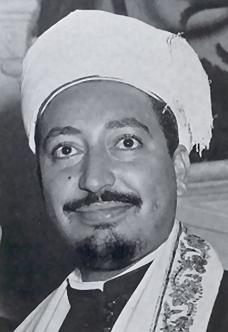
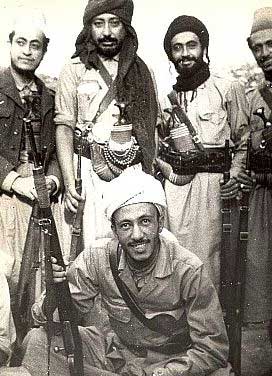
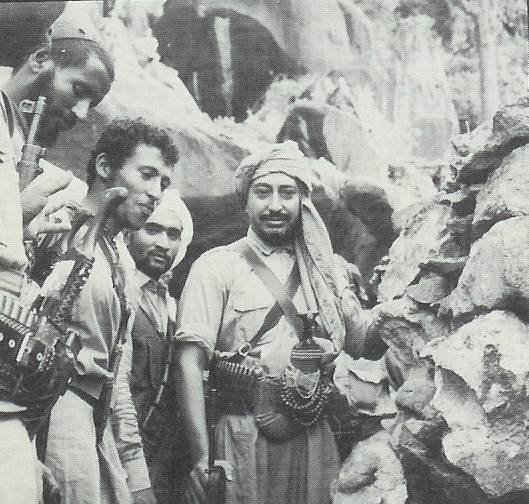
H.M. Muhammad Al-Badr (February 15, 1926 – August 6, 1996) (Arabic: المنصور محمد البدر بن أحمد) was the last king of the Mutawakkilite Kingdom of Yemen (North Yemen) and leader of the monarchist regions during the North Yemen Civil War (1962 – 1970). His full name was Al-Mansur Bi'llah Muhammad Al-Badr bin Al-Nasir-li-dinu'llah Ahmad, Imam and Commander of the Faithful and King of the Mutawakkilite Kingdom of the Yemen.
Muhammad al-Badr was born in 1926 as oldest son of Ahmad bin Yahya, later imam of the Zaydis and king of North Yemen. In 1944 he moved to Taizz in the south of the country, where his father had already been the Imam's deputy for several years, to continue his education. Soon after the assassination of Imam Yahya in February 1948 plotted by Sayyid Abdullah al-Wazir, al-Badr arrived in Sana'a, the capital, but apparently only gave tacit support to the new regime. Meanwhile Sayf al-Islam Ahmad had managed to get away from Taizz and made for Hajjah, where he gathered the tribes around him, proclaimed himself Imam with the title of al-Nasir and within a month of the assassination had easily regained control of Sana'a and executed the principal perpetrators of the rebellion.
Sayf al-Islam al-Badr (as Muhammad now became), not yet 20, was clearly able to patch up speedily any misunderstandings with his father, for in late 1949 he was appointed his deputy over Hodeida, the important port on the Red Sea. He was also made Minister of the Interior.
Al-Badr played a prominent role in quelling the revolt against Imam Ahmad in 1955 led by Ahmad's brother Sayf al-Islam Abdullah and afterwards was declared Crown Prince. During the remaining period of Imam Ahmad's rule he held the post of Minister of Foreign Affairs and from 1958 he was also the Imam's deputy over Sana'a. In 1959 he was put in complete charge of the Yemen for a few months during Imam Ahmad's absence in Italy for medical treatment. An assassination attempt on the life of Imam Ahmad in March 1961 left the latter gravely crippled and in October Sayf al-Islam al-Badr took over effective control of the government.
On 19 September 1962 Ahmad died in his sleep, al-Badr was proclaimed Imam and King and took the title of al-Mansur, but a week later rebels shelled his residence, Dar al Bashair, in the Bir al-Azab district of Sana'a and set up a republic.
Al-Badr had, when Crown Prince, like most young Arab leaders of his generation, been a great admirer of the Egyptian President Gamal Abdel Nasser and had even arranged during his father's absence in Italy for Egyptian experts to come and help modernize the Yemen in all fields, including the military. His father moreover had incorporated Yemen with the United Arab Republic of Egypt and Syria into what then became the United Arab States. It is thus ironic that the Yemen revolution of 26 September 1962 was largely instigated and planned by Egyptians and that without a massive Egyptian presence in Yemen for five years afterwards the Yemen Arab Republic could never have survived.
Although the revolution had announced to the world that al-Badr had died beneath the rubble of his palace, he had in fact managed to escape unhurt and set out to the north. As he proceeded on his journey the tribes rallied round him pledging him their unconditional allegiance as Amir al-Mumineen ("Prince of the Faithful"). These tribes were zealous Zaydi Shia for whom unstinted loyalty to an imam from the Ahl al-Bayt (the descendants of the Prophet) was a fundamental obligation of their religion. A few days later he held a press conference over the border in south west Saudi Arabia. His uncle Sayf al-Islam al-Hasan, who had been abroad and had been proclaimed Imam at the news of al-Badr's alleged demise, immediately gave allegiance to him together with all the princes of the Hamid al-Din family. Soon the entire tribal confederation of Bakil along with most of Hashid who occupied the central and northern highlands of Yemen and who had been Zaydis for centuries joined enthusiastically the cause of the Imam and the princes to fight the revolutionary regime.
During the bloody civil war which continued for eight years al-Badr, like his cousins, played a vital role. He lived alongside his men the life of a warrior, sharing with them every deprivation and hardship. He set up his headquarters in various places in the scenically spectacular mountainous north west Yemen, on Jebal Qara, for instance, in the region of Hajur al-Sham and at al-Muhabisha high up above the Tihama plain. These HQs situated in caves fitted out with every basic facility deep in the mountainside were nevertheless constantly under the threat of Egyptian bombardment from the air. In 1967 al-Badr left his HQ at Mabyan near Hajjah for Taif in Saudi Arabia, where he stayed until the end of the war. He assisted his father in defending his father's control over North Yemen from two rebellious brothers in 1955.
Ahmad named al-Badr crown prince. In 1956 he forged connections and signed agreements during a tour to Soviet bloc countries. During his father's trip abroad for medical treatment in 1960 al-Badr introduces a number of reforms in Yemen which his father had promised. His father annulled these upon his return. In 1962 Imam Ahmad died, and al-Badr succeeded him. Among al-Badr's first actions was to grant amnesty to political prisoners.
On September 26 of that year Abdullah as-Sallal, whom al-Badr had appointed commander of the royal guard, staged a coup, and declared himself president of the Yemen Arab Republic. Al-Badr escaped to the north of North Yemen, and rallied tribes that support him in opposition to Sallal. Fighting erupted between the two groups, starting the North Yemen Civil War. Al-Badr started getting support from Saudi Arabia, while the republicans received support from Egypt.
In 1970, despite the fact that territorially most of the Yemen remained under the control of al-Badr and the Hamid al-Din family, Saudi Arabia, which had been the principal opponent of the Sana'a regime, recognized the Yemen Arab Republic and other nations like the United Kingdom swiftly followed suit.
Stunned by Saudi Arabia's recognition of the republican regime which had been negotiated without any consultation with him whatsoever, al-Badr refused to stay any longer in Saudi Arabia and demanded that he be permitted to leave the kingdom immediately. He went to England, where he lived quietly in a modest house in Kent, only going abroad to visit the holy cities of Mecca and Medina and to call on relatives and friends in that part of the world. Its also rumored that he had a late son in 1994.
He died in 1996 in London, and is buried in Brookwood Cemetery in Woking, in Surrey.
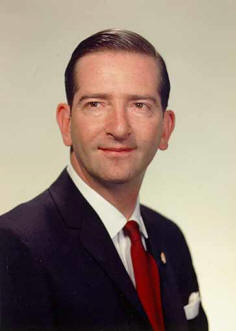
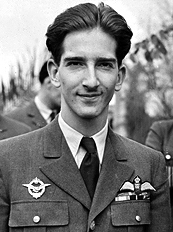
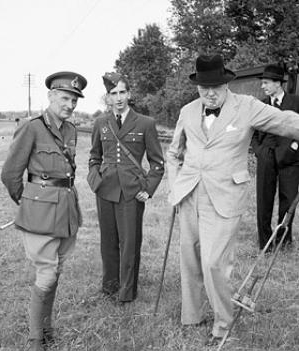
Peter II, also known as Peter II Karađorđević (Serbo - Croatian: Petar II Karađorđević, Serbian Cyrillic: Петар II Карађорђевић; 6 September 1923 – 3 November 1970), was the third and last King of Yugoslavia. He was the eldest son of King Alexander I and Queen Maria (born Princess of Romania); his godfather was George V of the United Kingdom.
His education commenced at the Royal Palace. He then attended Sandroyd School in Wiltshire, England. Then 11 years old, Peter, of the House of Karađorđević, succeeded to the Yugoslav throne in 1934 upon the assassination of his father King Alexander I in Marseille, during a state visit to France. Because of the King's young age, a regency was established, headed by his father's cousin Prince Paul of Yugoslavia.
Although King Peter and his advisers were opposed to Nazi Germany, Regent Prince Paul declared that the Kingdom of Yugoslavia would join the Tripartite Pact on 25 March 1941. On 27 March, King Peter, then 17, was proclaimed of age, and participated in a British supported coup d'état opposing the Tripartite Pact.
Postponing Operation Barbarossa, Germany simultaneously attacked Yugoslavia and Greece. From 6 April the Luftwaffe pounded Belgrade for three days and three nights in Operation Punishment. Within a week, Germany, Bulgaria, Hungary and Italy invaded Yugoslavia and the government was forced to surrender on 17 April. Yugoslavia was divided to satisfy Italian, Bulgarian, Hungarian and German demands and puppet Croat, Montenegrin and Serb states proclaimed.
Peter was forced to leave the country with the Yugoslav Government following the Axis invasion; initially the King went with his government to Greece and Jerusalem, then to the British Mandate of Palestine and Cairo. He went to England in June 1941, where he joined numerous other governments in exile from Nazi occupied Europe. The King completed his education at Cambridge University and joined the Royal Air Force.
Despite the collapse of the Yugoslav Army, two rival resistance groups to the occupying forces formed. The first were the Partisans, a Communist led left wing movement encompassing republican elements in Yugoslav politics, led by Josip Broz Tito. The other were the "Yugoslav Army in the Fatherland", commonly known as Chetniks, a predominantly Serbian movement led by royalist General Draža Mihailović, soon proclaimed the Minister of Defense in the government - in - exile. Starting in November 1941, Mihailović began attacking the Partisan strongholds, the "liberated territories". The royalist Chetniks soon ceased operations against the occupation altogether, and focused on defeating the Partisans. In this they found a common cause with the enemy and occasional and opportunistic collaboration between the royalists and the Axis troops began, aiming to stamp out the Partisans.
Learning of the shift of allegiance from Ultra intercepts, the Allies switched their support to the Partisans by November 1943, as their sources came to indicate an increasing relationship between the Germans and Mihailović. The Partisans soon gained recognition in Tehran as the Allied Yugoslav forces on the ground. In 1944 the Partisan commander, Marshal Josip Broz Tito, was recognized as the Commander - in - Chief of all Yugoslav forces, and was appointed Prime Minister of a joint government.
Peter married Princess Alexandra of Greece and Denmark, in London on 20 March 1944. They had one son: Alexander, Crown Prince of Yugoslavia.
Peter was deposed by Yugoslavia's Constituent Assembly on 29 November 1945. After the War, he settled in the United States. After many years of suffering from cirrhosis, he died in Denver, Colorado, on 3 November 1970 after a failed liver transplant.
He is interred at the St. Sava Monastery Church at Libertyville, Illinois, the only European monarch buried on American soil. His son, Crown Prince Alexander, is the legitimate heir to the Yugoslavian throne.
On 4 March 2007 Crown Prince Alexander announced plans to return the body of his father to Serbia. The plan has upset some Serbian - Americans. Peter II chose St. Sava Serbian Orthodox Monastery as his interim resting place because of the extenuating circumstances that has afflicted his homeland. He is supposed to be transferred to Topola.